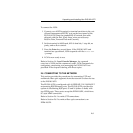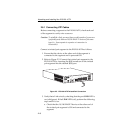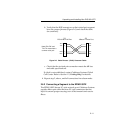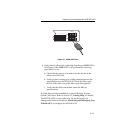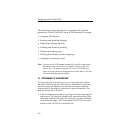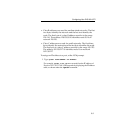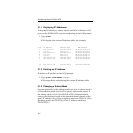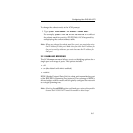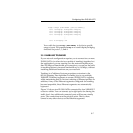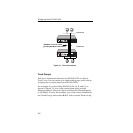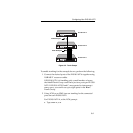
3-2
Configuring Your ELS100-16TX
The following sections describe how to configure the optional
parameters of the ELS100-16TX using LCM commands, including:
• Assigning IP addresses
• Enabling and disabling bridging
• Displaying bridging functions
• Enabling and disabling trunking
• Displaying trunking status
• Defining and deleting virtual workgroups
• Assigning a community name
3.1 ASSIGNING IP ADDRESSES
You can assign an IP to each port, or you can assign one address
that can be used for the the entire device. Addresses for each port
must be unique. IP addresses are divided into classes based on
what portion of the address is network or port information. The
address classes are A, B, and C.
• Class A addresses are used in very large networks that support
many ports. The first byte identifies the network and the other
three bytes identify the node. The first byte of a class A address
must be in the range 1–126. The address 100.125.110.10 would
identify node 125.110.10 on network 100.
Note: You can use the LCM
erase
command to erase all configuration
information and return the unit to default settings on the next
system reset. The
erase
command also clears any IP addresses.
If you are using a network management tool other than LCM, refer
to its accompanying documentation.




